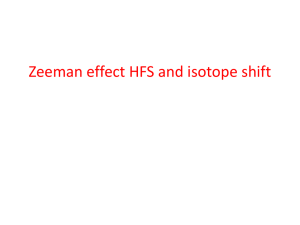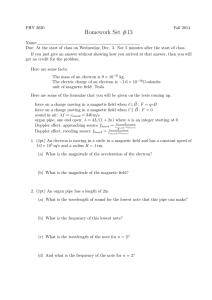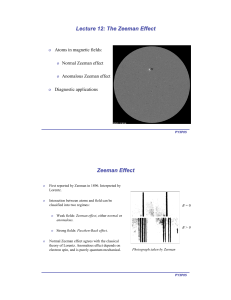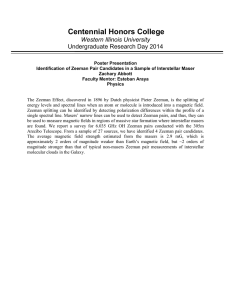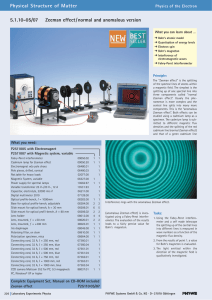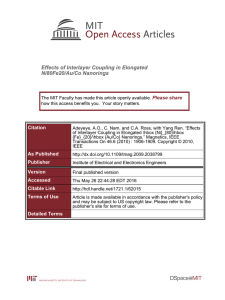Document 11001730
advertisement
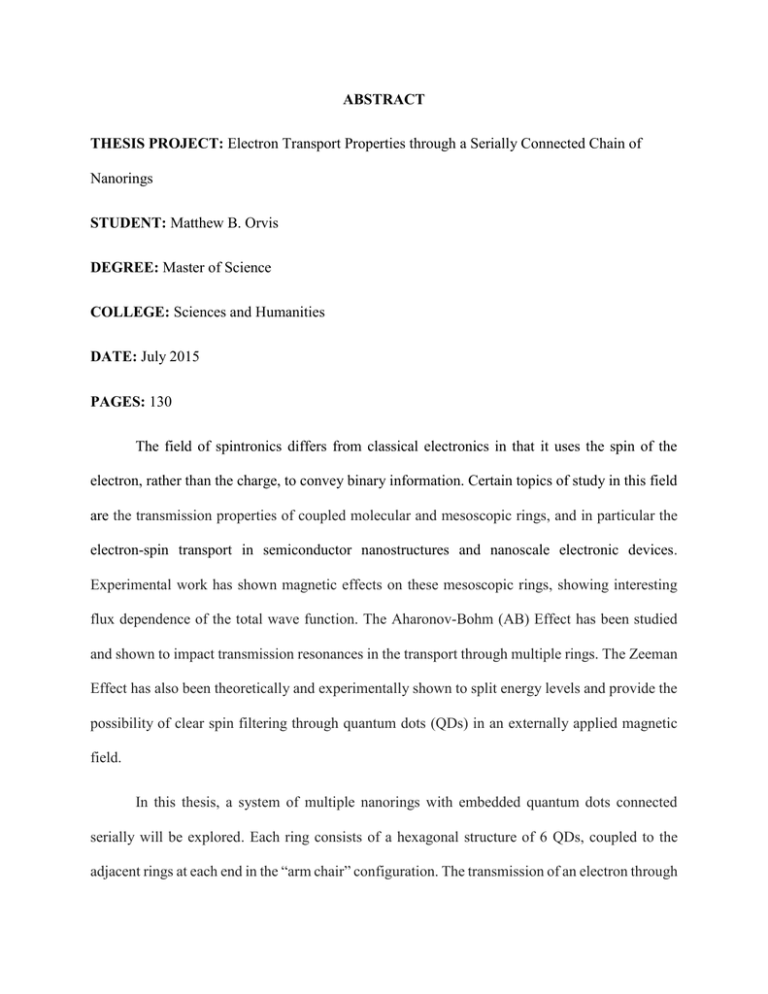
ABSTRACT THESIS PROJECT: Electron Transport Properties through a Serially Connected Chain of Nanorings STUDENT: Matthew B. Orvis DEGREE: Master of Science COLLEGE: Sciences and Humanities DATE: July 2015 PAGES: 130 The field of spintronics differs from classical electronics in that it uses the spin of the electron, rather than the charge, to convey binary information. Certain topics of study in this field are the transmission properties of coupled molecular and mesoscopic rings, and in particular the electron-spin transport in semiconductor nanostructures and nanoscale electronic devices. Experimental work has shown magnetic effects on these mesoscopic rings, showing interesting flux dependence of the total wave function. The Aharonov-Bohm (AB) Effect has been studied and shown to impact transmission resonances in the transport through multiple rings. The Zeeman Effect has also been theoretically and experimentally shown to split energy levels and provide the possibility of clear spin filtering through quantum dots (QDs) in an externally applied magnetic field. In this thesis, a system of multiple nanorings with embedded quantum dots connected serially will be explored. Each ring consists of a hexagonal structure of 6 QDs, coupled to the adjacent rings at each end in the “arm chair” configuration. The transmission of an electron through a specified number of rings via a Tight-Binding computational model will be solved. The effect of an applied external magnetic field is modeled by including the Zeeman Effect and AB Effect in the system Hamiltonian. The AB Effect introduces a phase shift into the system, modifying the band structure, while the Zeeman Effect splits the electron transmission energy levels according to spin. Along with these magnetic effects, the effect of altering the site energies and hopping integrals of individual QDs will also be investigated. The number of rings connected serially will also be altered and its effect analyzed. Finally, these results will be generalized and applied towards learning more about transmission effects through graphene, the 2-dimensional application of this system’s 1-dimensional nanoring chain.


